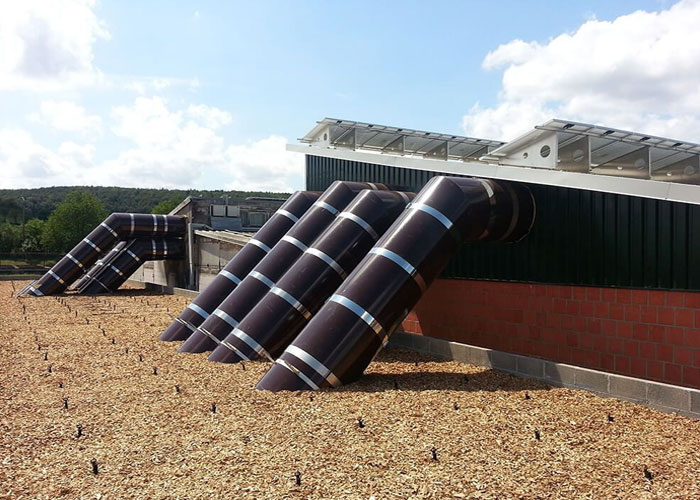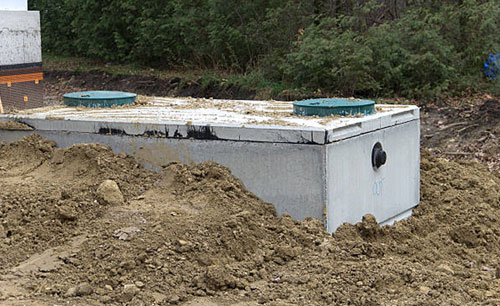If you're considering upgrading your current onsite wastewater system, you may be interested in learning more about the many types of options available. Adaptable septic tanks are one option, while Biofilters and Cast-in-place flexible pipe connectors are another. But how do you choose the best option for your property? Read on for some information on the benefits of these technologies and how to choose the right one for you.
Depending on the location of your home, you might have to purchase an STP to handle your sewage. Generally, residential buildings need at least one STP to treat sewage. Many STPs are located underground, making them difficult to maintain. Moreover, you may not be able to inspect them without hiring an expert. It is better to consult a professional if you have any doubts about the process.
Adaptable Septic Tanks
An innovative approach to septic tank design can help improve onsite wastewater treatment systems while reducing installation costs. Adaptable septic tanks can be customised to suit the needs of the site, its environmental conditions, and performance targets. The system can be used as a stand-alone system or incorporated into existing treatment arrangements. This way, the onsite wastewater treatment process can be optimised, and a more environmentally friendly approach to waste management can be adopted.

Soil absorption systems use gravel to provide biological treatment for septic tank effluent. Effluent is released into gravel-lined trenches via perforated pipes and enters the biologically active soil. The soil's organic matter provides the ideal environment for microorganisms to flourish and break down the wastewater. The soil also acts as a physical filter. Particles of gravel in the soil absorb wastewater and trap fine grit. The soil's pores allow the effluent to become clarified.

Biofilters
A recent scientific study has cited the potential of peat-based biofilters for onsite wastewater treatment. Since 1988, Premier Tech has been developing and testing a peat-based biofilter to improve onsite wastewater treatment systems. This three-phase research and development programme included an experimental phase, field testing of two prototype biofilters, and a demonstration phase involving installing four biofilters.
A biofilter uses a living organism called a microbial population to degrade the chemicals in a wastewater treatment system. This technology has a long history and a bright future. LACSD is installing two large biofilters at the Los Angeles Joint Water Pollution Control Plant. The project will involve modifying the top of a biosolids silo building, covering a truck loading station, and installing conveyor belts that move biosolids.
Cast-in-place flexible pipe connectors
One way to ensure proper sealing is to use a quality cast-in-place flexible pipe connector. Designed to fit standard pipe sizes, these fittings offer a watertight seal. They are cast-in-place and feature a key lock integrally cast into the connector during the production process. The connector's two-step design accommodates a range of OD pipe sizes, including commercial septic tanks and grease traps.
Depending on your specific wastewater application, you may use different types of cast-in-place connectors. Some are intended for onsite wastewater tank-to-pipe connections, while others are used for other applications. Regardless of the application, choosing a connector that meets ASTM C1644 standards is important. Using only one type of connector can prevent confusion during production.
The downdraft from vent pipes on the roof
The downdraft from vent pipes on the roof can be a problem for many onsite wastewater treatment systems. Although vent pipes do not produce a huge amount of gas, they must be vented to avoid pressure buildup. Typically, this problem occurs before the bacterial growth in the tank becomes unhealthy, and the water begins to smell. Moreover, people should be careful about what they flush down their toilets and sinks. Downdrafts from roof vent pipes are caused by wind blowing from the opposite side of the building. They are also caused by a certain speed and direction of the wind.
A vent pipe is a pipe that leads from individual plumbing fixtures to the outdoors. It connects with the open air and the waste piping. This allows sewage gases to escape and adds oxygen to the waste system. Fresh air in the system discourages the growth of slime and corrosion. It also provides a local means of escape. This is a significant benefit to onsite wastewater treatment systems.
Case study areas
The decision-making process on the deployment of onsite wastewater treatment systems involves complex interactions impeded by the absence of a multi-level, systems-based perspective. The resulting decision-making process lacks innovation and focuses on reductionist approaches. A systems-based approach fills this knowledge gap by examining the factors that influence technology adoption, sustainability, and transitions. In addition, it provides a framework for evaluating the benefits of different treatment technologies and their costs.
A recent study by faculty at NC State University identified 17 case study areas for improving onsite wastewater treatment systems in North Carolina. Using GIS data, the researchers have identified 17 counties with a centralised treatment point. These areas could benefit from a combination of new technologies and an improved treatment portfolio. As coastal communities face increased risk from storms and other extreme weather events, these systems are directly linked to the health of the local and regional aquatic ecosystems.







































Share Post